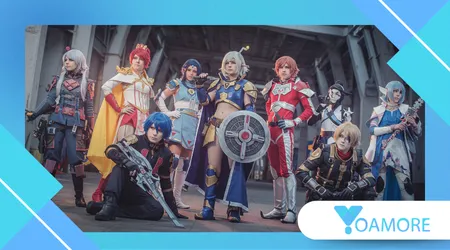Understanding Modern Tribes: 10 Unique Micro Cultures

Have you heard of modern tribes?
Anúncios
Culture is no longer defined strictly by geography, ethnicity, or language. In today’s interconnected world, identity takes on new shapes, forming through shared values, aesthetics, and lifestyles that often transcend national boundaries.
These emerging collectives—modern tribes—are creating their own cultural ecosystems, complete with rituals, communication styles, and internal codes.
Understanding modern tribes means observing how people express belonging in a time of rapid social change, where traditional communities are no longer the only source of cultural meaning.
From digital worlds to street corners, from quiet bookstores to loud music festivals, these microcultures are reimagining what it means to belong.
Anúncios
Though each is distinct, they all serve the same human desire—to be seen, understood, and connected to something greater.
The Rise of Identity-Driven Micro Cultures
The fragmentation of mainstream culture has given rise to smaller, tightly-knit subgroups that build entire identities around shared passions or philosophies.
These aren’t trends. They’re living communities. They have their own expressions, fashion, spaces—both physical and digital—and in many cases, their own economic and social structures. People don’t just participate in them casually. They live through them.
Understanding modern tribes requires a look beyond generalizations. It involves paying attention to how values are embodied in daily rituals, language, aesthetics, and even silence.
These groups often reject mass culture not out of rebellion, but to preserve meaning that feels authentic in a world saturated with noise.
In major cities, online platforms, and even rural enclaves, these tribes form bonds that mimic the intimacy of traditional societies while adapting to the complexities of a hyperconnected age.
Let’s explore ten unique microcultures that reveal how culture is constantly being reshaped and redefined.
The Minimalists Who Find Abundance in Less
In a world overwhelmed by consumerism, some individuals turn toward simplicity. These are not just people with empty closets. They are part of a broader philosophy rooted in intentional living.
Minimalists craft homes, schedules, and even digital spaces that reflect clarity. Their culture values time over things, silence over noise, and quality over volume.
Minimalism, as a tribe, speaks through soft tones, slow movements, and carefully chosen objects that reflect deeper values rather than status.
Read also: The Rise of Digital Tribes: 10 Modern Micro Cultures
The DIY Makers Building Futures with Their Hands
While automation and convenience dominate the modern landscape, a growing group of individuals choose to make things by hand.
These creators form a microculture of skill-sharing, innovation, and independence. They might build furniture, brew beer, or design clothes—but what they really make is meaning.
The DIY maker tribe values creativity over perfection, community over competition, and sustainability over mass production. Their workshops, blogs, and shared spaces are filled with quiet defiance against disposability.
The Digital Nomads Redefining Work and Home

No longer tied to one location, digital nomads carry their culture in backpacks and laptops. This microculture thrives on mobility, freedom, and adaptability.
Airports become gateways, cafes become offices, and community is found in co-living spaces or local hubs. But it’s not just about working from a beach.
Digital nomads often form tight communities around shared experiences of uncertainty, independence, and global curiosity.
Their lifestyle challenges conventional ideas of success, stability, and even citizenship.
The Bookstagrammers Keeping Literature Alive
In a time of fast content, a digital tribe has emerged around the slow pleasure of reading.
Bookstagrammers turn literature into lifestyle, blending photography, commentary, and personal reflection.
This microculture doesn’t just talk about books—they curate entire worlds around them. A well-arranged bookshelf becomes a personal manifesto. Their language is poetic, their timelines visual odes to paper and ink.
Through hashtags, virtual clubs, and heartfelt reviews, they resist the erosion of deep reading in a swipe-driven culture.
The Eco-Warriors Turning Values into Action
This tribe doesn’t just believe in environmentalism—they embody it in every choice they make. From zero-waste living to regenerative agriculture, eco-warriors belong to a microculture where the line between lifestyle and activism disappears.
Their community grows through local initiatives and digital movements alike, focusing on collective responsibility.
Their rituals might include composting, foraging, or climate protests, all grounded in a belief that healing the planet starts with personal accountability.
The Urban Cyclists Redefining City Life
For this tribe, the bicycle is more than transport—it’s identity. Urban cyclists carve paths through concrete jungles, merging speed with sustainability.
Their culture thrives in bike cafés, repair collectives, and city advocacy groups. They have their own dress codes, navigation rituals, and shared language.
Beyond commuting, cycling becomes a metaphor for autonomy. In cities shaped by cars, they reclaim the streets with muscle-powered determination and a deeply communal spirit.
The Cosplayers Who Live Inside the Narrative
More than costumes, cosplay is a performance of identity, art, and community. Cosplayers create and inhabit characters from anime, games, comics, and beyond, bringing fiction into physical form.
This microculture celebrates transformation, creativity, and belonging. Conventions serve as temporary homelands where hierarchies blur and personal boundaries expand.
Cosplay offers not escape but expression—an opportunity to show truths through fabric, makeup, and storytelling. Understanding modern tribes like this one means recognizing the power of fantasy to shape real-world confidence and connection.
The Language Revivalists Rescuing Words from Extinction
In forgotten dialects and ancestral tongues, a tribe of language revivalists is fighting erasure. These individuals are not just linguists—they’re cultural preservationists.
They teach endangered languages to new generations, often using social media and digital archives. From Gaelic to Ainu, these communities prove that language is more than communication—it’s memory, philosophy, and rhythm.
Their commitment isn’t nostalgic; it’s visionary. Every word saved brings with it a worldview that might otherwise disappear forever.
The Alt Health Seekers Exploring Ancient Paths
Turning away from pharmaceuticals and processed food, this microculture leans into herbal remedies, breathwork, and ancestral wellness.
Alt health seekers gather in sound baths, healing circles, and fermentation workshops.
Their beliefs are deeply personal, often fusing ancient practices with modern science. Though sometimes misunderstood, this tribe searches for balance beyond clinical walls. They don’t just want cures—they seek wholeness.
The Gamers Who Build Entire Worlds from Imagination
Gaming is no longer just a pastime—it’s a place. Gamers create and inhabit virtual worlds where strategy, cooperation, and creativity blend into daily experience.
From esports arenas to indie forums, this tribe develops culture through avatars, inside jokes, and real friendships forged through pixels. They value mastery, exploration, and shared stories.
Contrary to stereotypes, gaming fosters community, resilience, and emotional growth. For many, it’s not an escape—it’s home.
Conclusion
Understanding modern tribes means moving beyond demographics. It means listening to the rhythms of communities formed through choice, not birth.
These ten microcultures reflect how people carve identity in a world overflowing with options and noise. They hold onto rituals, values, and shared language in ways that resist fragmentation.
Each tribe, whether analog or digital, reflects a deep human need—to belong to something meaningful. They shape behavior, create culture, and remind us that even in a globalized world, intimacy and specificity still matter. They aren’t trends.
They’re anchors. And as long as people seek connection, these tribes will continue to evolve, offering sanctuary in a rapidly shifting world.
FAQ: Understanding Modern Tribes and Micro Cultures
1. What defines a modern tribe today?
A modern tribe is a community formed around shared values, interests, or lifestyles that create a sense of identity and belonging, regardless of geography.
2. How are microcultures different from subcultures?
Microcultures are often more fluid and centered on shared daily practices, while subcultures typically have stronger boundaries and origin in cultural resistance.
3. Are modern tribes exclusive or inclusive by nature?
Many tribes strive for inclusivity, especially those formed online, though some naturally develop their own codes and norms that can create informal boundaries.
4. Can someone belong to multiple tribes at once?
Absolutely. In fact, many people navigate several overlapping microcultures that reflect different aspects of their personality or interests.
5. Why is understanding modern tribes important?
They reveal how people adapt, connect, and build meaning in the modern age—offering insight into shifting values, identity, and human connection in real time.
